
Lot 45
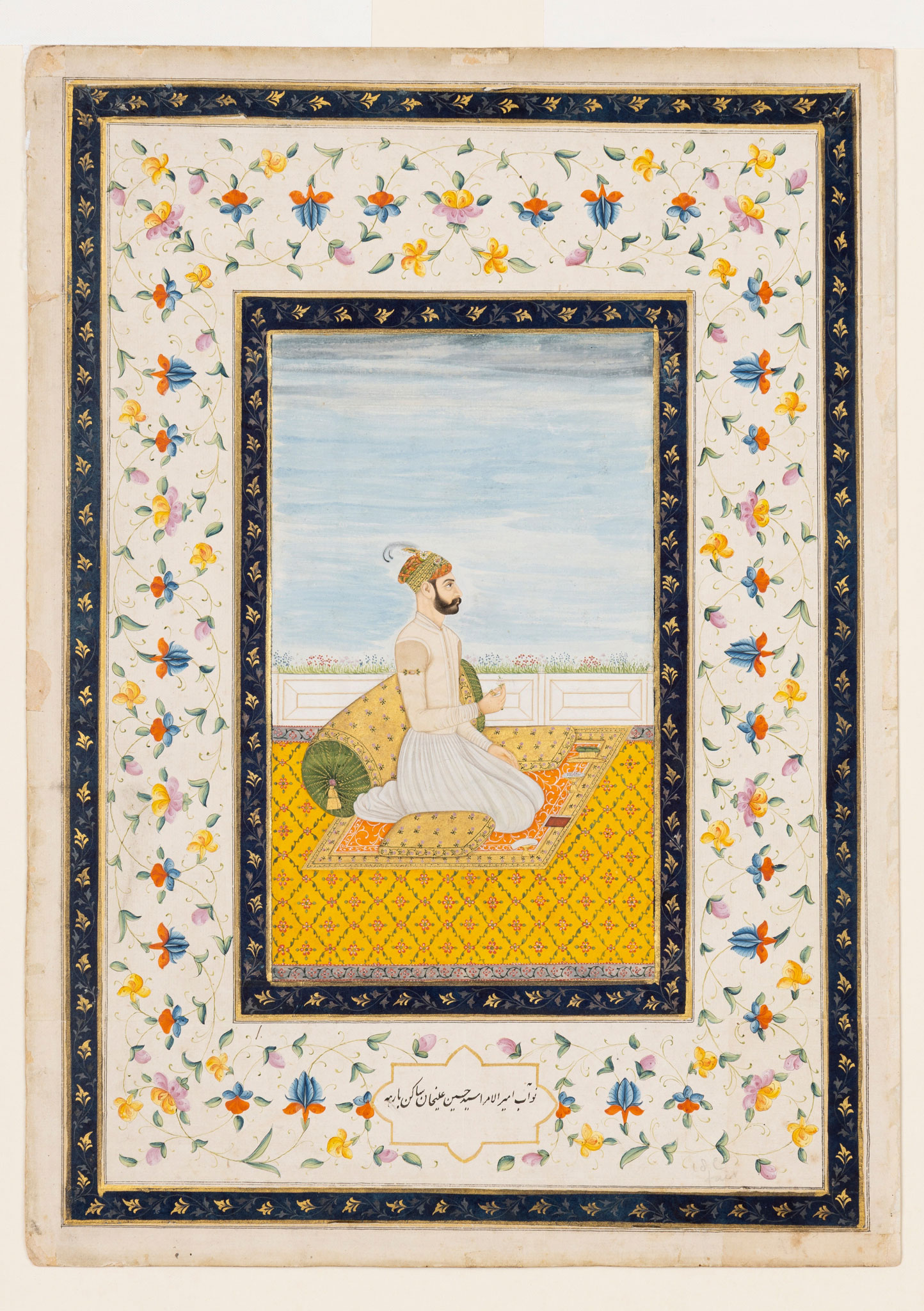
A DETACHED FOLIO FROM THE POLIER ALBUM: NAWAB AMIR SAYEED HUSAIN ALI KHAN ‡
CIRCLE OF MIHR CHAND, INDIA, LUCKNOW OR FAIZABAD, MID-18TH CENTURY

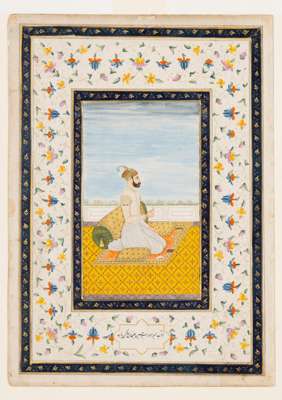
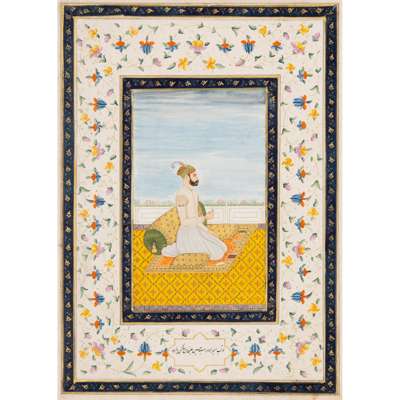
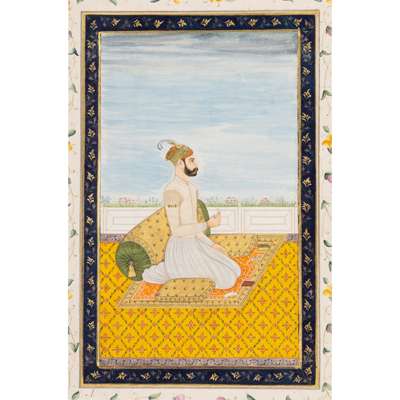
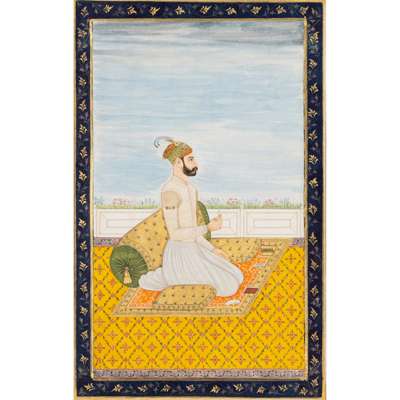
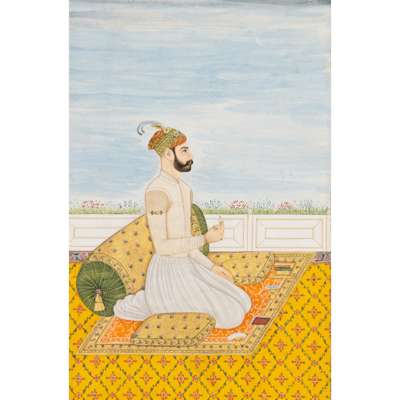
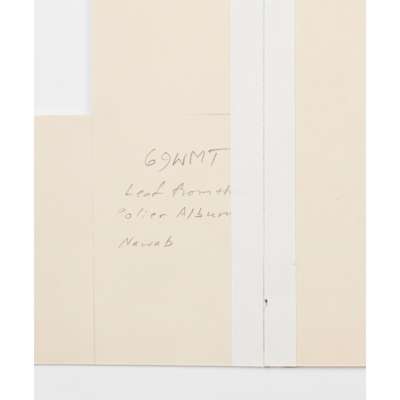
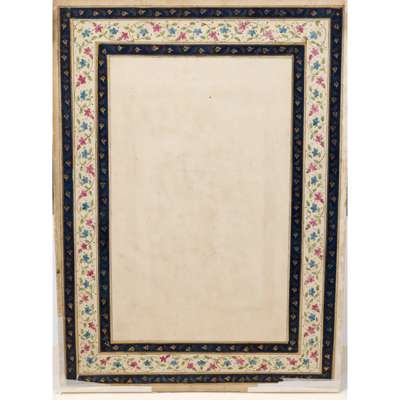



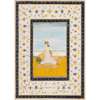

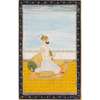

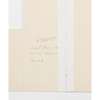


Auction: 10 December 2025 from 14:00 GMT
Description
gouache on paper heightened in gold, mounted on to an album page with broad floral border on a cream ground with an inscription-filled cartouche bottom centre, within two narrow gold and navy blue borders, depicting the Nawab seated in profile on a yellow and orange carpet against a gold, green and purple bolster, all on a wide yellow and red floral lattice decorated terrace, dressed in a white jama and holding a little flower in his right hand, with a bejewelled orange and green turban, depicted with strong facial features, a landscape on the horizon, verso of album page decorated, mounted, framed and glazed
Dimensions
39.9cm x 28.5cm
Provenance
Acquired, Sotheby’s, New York, South Asian Art, 21 March 2012, lot 224.
The collection of a German enthusiast.
Footnote
The inscriptions, read: ‘Nawab Amir al-Umara’ Sayyid Husayn ‘Ali-Khan resident of [sic] Barha’.
Whilst this painting is not signed, the artist's treatment of the face, the exquisite details and palette, are reminiscent of the artist Mihr Chand and his atelier. It is worth comparing the style of the painting with one entitled, 'Colonel Polier's Nautch' that recently sold at Christie's, Exceptional Paintings from the Personal Collection of Prince & Princess Sadruddin Aga Khan Collection, and is signed by the artist Mihr Chand. The details of both are very similar in style (see Christie's, London, 28 October 2025, lot 51).
Antoine Louis Henri Polier (1741–1795) was a Swiss-born engineer, architect, and art collector who served the British East India Company in India. Joining as a surveyor in 1757, he became Chief Engineer of the Bengal Army and helped design Fort William in Calcutta. Sent to Awadh, he served Nawab Shujaʿ al-Daula as chief architect and secretly as a Company agent. Polier grew rich through his architectural commissions and trade, building a grand residence in Lucknow called Polierganj. After being dismissed by the Nawab in 1782, Warren Hastings asked him to remain in Lucknow as a Company representative. Polier was a major collector of Indian manuscripts and paintings, commissioning albums that blended Mughal and European styles, especially with the help of his favourite artist, Mihr Chand. After 30 years in India, he returned to France in 1787, but was murdered in 1795.
The Polier album pages are characterised by their broad borders of European-inspired polychrome floral decoration and often comprise inscriptions of the subject, as in the case of this one.
Nawab Amir Sayeed Husain Ali Khan (1666 – 8 October 1720), titled Itisham-ul-Mulk, was a powerful Mughal noble and key political figure of the later Mughal period. Alongside his brother, Abdullah Khan Barha, he acted as a ‘kingmaker’, influencing the rise and fall of several Mughal emperors - including Bahadur Shah I, Jahandar Shah, Farrukhsiyar, Rafi ud-Darajat, Shah Jahan II, Ibrahim, and Muhammad Shah. As governor of Ajmer and Aurangabad, Hussain Ali Khan gained immense influence, eventually becoming one of the de facto rulers of the Mughal Empire. He is most noted for ordering the execution of Emperor Farrukhsiyar in 1719, after repeated assassination attempts by the emperor against him and his brother. By the early 18th century, during their dominance, India remained the world’s largest economy.

















